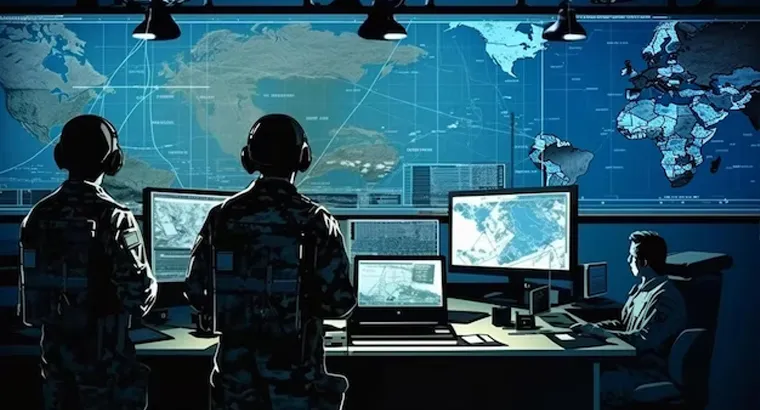
China has been heavily investing in modernizing its military, focusing on developing advanced weaponry, technological innovation, and expanding naval capabilities. The country has made significant investments in stealth aircraft, ballistic missiles, aircraft carriers, and space-based capabilities to increase its presence on the global stage.
However, there are growing concerns about China’s cyberwarfare capabilities, including the development of offensive tools and strategies. This has raised worries about China’s capacity for cyber espionage, disrupting critical infrastructure, and carrying out cyber attacks. As a result, countries like India have taken steps to ban Chinese apps such as CamScanner, Wechat, Shein, and Camcard for Salesforce, as well as the popular app TikTok.
Following in their footsteps, the US also confronted ByteDance, the owner of the TikTok application, about cybersecurity issues, prompting them to either sell their popular app or stop operating in the US. The US and China’s Internet War now heads to the Senate, where TikTok’s general counsel stepped down and the Senate passed a bill to sell or ban TikTok in the US unanimously.
China’s Strategic Arsenal
China has recently fortified its military with a novel Information Support Force (ISF) with the explicit objective of enhancing its capability to execute networked warfare and achieve triumph. During a ceremony last week, President Xi Jinping officially inaugurated the ISF by presenting a flag to its leaders. The main objective of the ISF is to custom-build a network information system to meet the demands of contemporary warfare and enhance its combat capabilities to high standards. The Chinese government views the creation of the ISF as a crucial step in modernizing its armed forces, with plans to celebrate the 100th anniversary of the People’s Liberation Army (PLA) in 2027.
It is reported that China’s Central Military Commission, chaired by Xi Jinping, will oversee the ISF. China’s military strategy emphasizes developing strength across all domains, with the ISF prioritizing improved communication on the modern battlefield. China is known for its adept use of networks to undermine its opponents.
During the Vanderbilt Summit on Modern Conflict and Emerging Threats in Nashville, FBI Director Christopher Wray warned that China is a “significant threat” because its cyber agents are continually targeting US infrastructure. Wray also stressed the scope of China’s cyber activity, which is thought to exceed that of all other major governments combined.
He also expressed his concerns about China’s increased use of artificial intelligence in military and intelligence operations to boost its hacking attempts. It is believed that Chinese hackers are systematically preparing for future attacks that could disrupt vital infrastructure services, including water, electricity, communications, and technology, through these incursions. In addition, Wray said that the Chinese hackers are working in tandem with the Chinese government, which is building up its ability to thwart US attempts to meddle in the China-Taiwan issue.
The recent successful test of China’s DF-20 hypersonic missile has also sparked speculation about its capabilities. Some say it can carry both conventional and nuclear bombs. This test has highlighted the missile’s outstanding ability to bypass existing defense systems. This is an imminent threat to global security. It is part of China’s ongoing efforts to modernize its military capabilities and display advances in hypersonic technology, thereby asserting its control over the international government. The DF-20’s precision and speed will enhance China’s deterrent strategy while increasing tensions in the arms race and geopolitical sphere. This raises concerns about stability and balance in the Asia-Pacific area.
Regional and International Concerns
Michael Logico, a colonel in the Philippine army, has raised concerns about the potential consequences of deploying Typhon missile systems in the South China Sea. He warned that this could spark an arms race among the 14 nations participating in the exercise, which includes Japan, India, ASEAN, and the European Union. This heightened military activity could intensify tensions and jeopardize the region’s stability. Logico also suggests that this deployment may pave the way for more permanent installations of missile systems in the Western Pacific.
Under the terms of the Enhanced Defense Cooperation Agreement, the US has the authority to station troops, weapons, and equipment at up to nine military bases located within Philippine territory. However, Zhang Jie, a researcher at the National Institute of International Strategy, cautioned that Manila’s decision to engage countries beyond the region of the South China Sea conflict could potentially worsen tensions and raise the chance of a cold war.
Overall analysis
China’s military endeavors, such as hypersonic missiles, keep adding more complexity to the Taiwan-China conflict. Their use of cyber capabilities continues to threaten targeted disruptions and espionage. This has the potential to intensify regional tensions, drawing Taiwan and other nations into a conflict. Vietnam, Malaysia, and Indonesia are just a handful of the nations that face increased regional security challenges, militarization, and destabilization as a result of conflicts. The use of cyber warfare also raises global security concerns, and rapid diplomatic initiatives should be taken to ease tensions in the Asia-Pacific region.




